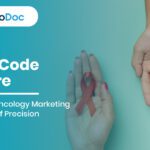Abstract
The medical oncology landscape, a field defined by its rapid innovation and stringent regulatory oversight, is profoundly shaped by federal policy. This article provides a comprehensive analysis of how administrative changes during the 2017-2020 period, often referred to as the “Trump era”, influenced the strategies and tactics of medical oncology marketing. We move beyond political narratives to examine the tangible effects of policy shifts on drug development, pricing transparency, and regulatory pathways, and their subsequent impact on how pharmaceutical companies engage with both healthcare professionals (HCPs) and patients. Drawing on digital marketing analytics, we explore how marketers adapted to a changing environment, focusing on metrics of engagement, content effectiveness, and campaign ROI in a dynamic regulatory climate. This educational article is designed for pharma managers and medical professionals, offering a data-centric perspective on how macro-level policy decisions ripple through the a-political world of oncology marketing, compelling an evolution in strategy, communication, and ethical practice.
Introduction: The Intersection of Policy and Practice
In the highly regulated world of pharmaceuticals, federal policy is a force of nature. It can accelerate innovation, reshape market dynamics, and fundamentally alter how life-saving therapies are developed, priced, and communicated to the world. For medical oncology, a field at the cutting edge of scientific discovery, the interplay between policy and practice is particularly intense. The period from 2017 to 2020 was marked by several significant administrative initiatives, from the FDA’s focus on accelerated drug approvals to a new emphasis on drug pricing transparency. These changes, while rooted in broader political objectives, had concrete and lasting effects on the day-to-day operations and long-term strategic planning of oncology marketing teams.
This article does not seek to litigate the merits of any specific political figure or administration. Instead, it serves as an analytical guide, dissecting the key policy levers that were pulled and tracing their apolitical impact on the marketing landscape. By focusing on the cause-and-effect relationship between policy and marketing outcomes, we aim to provide a clearer understanding of how to navigate a future where policy continues to be a central determinant of success in medical oncology marketing. We will explore how marketers, armed with digital analytics, measured and responded to these changes, shedding light on a critical aspect of strategic management in a competitive environment.
Part I: The Regulatory Environment and Its Marketing Ripple Effects
One of the most significant areas of change during this period was the regulatory approach of the U.S. Food and Drug Administration (FDA). Policy changes here directly influenced the speed of drug launches and the nature of marketing claims.
1. The FDA’s Emphasis on Accelerated Drug Approvals A key policy objective was to streamline the FDA’s approval process to bring new drugs to market faster. This was often championed through initiatives that focused on reducing review backlogs and using real-world data (RWD) and real-world evidence (RWE) to supplement traditional clinical trial data.
- Marketing Impact: The acceleration of drug approvals presented a major opportunity and a challenge for oncology marketers. With a shorter runway to launch, teams had to become more agile in their pre-commercialization strategies. They needed to quickly prepare marketing materials, and digital campaigns for HCP and patient education had to be ready to live in a much tighter window. This increased the pressure to use digital tools for rapid content creation, regulatory review, and deployment. The shift towards RWD/RWE also provided new data for marketing narratives, allowing for the creation of compelling content that demonstrated a therapy’s effectiveness in a broader, more diverse patient population than was represented in a clinical trial.
- Analytics Focus: Marketers used analytics to measure the effectiveness of their rapid-response digital campaigns. Metrics like “Time to First HCP Engagement,” “Content Download Conversions” for pre-launch materials, and “Search Ranking” for disease-state education became critical indicators of a brand’s readiness for launch.
2. The Shift in Regulatory Communication The administration also encouraged the use of digital channels for communicating with the public. This included a push for more transparent and direct communication about drug risks and benefits, and a focus on DTC (Direct-to-Consumer) advertising.
- Marketing Impact: This environment encouraged oncology marketers to experiment more with DTC digital campaigns, particularly for raising disease state awareness and directing patients to educational resources. While still heavily regulated, the new landscape provided a window for creative digital content, such as patient testimonials and explainer videos, to gain traction.
- Analytics Focus: In this context, analytics were essential for compliance and impact measurement. Marketers used tools to monitor social media for off-label discussions, to ensure that risk information was prominently displayed and engaged with, and to track patient-reported outcomes (PROs) where ethically permissible.
Part II: The Drug Pricing Debate and Its Marketing Repercussions
Another central theme of the period was the intense public and political scrutiny of drug pricing. While no single piece of legislation fundamentally altered the pricing structure, the public discourse itself had a significant impact on marketing strategy.
1. Transparency in Pricing and Patient Costs The administration championed policies to increase drug pricing transparency. This included discussions around requiring prices to be disclosed in DTC advertising and a focus on affordability.
- Marketing Impact: The focus on pricing compelled oncology marketers to pivot their messaging from a sole emphasis on clinical efficacy to a broader narrative of value. Campaigns began to highlight patient support programs, co-pay assistance, and resources for navigating insurance and reimbursement. The marketing goal was to address the affordability concern head-on, positioning the company as a partner in a patient’s financial journey, not just a provider of medicine. This required a delicate balance of providing value-oriented content without being seen as overly promotional.
- Analytics Focus: Marketers used analytics to measure engagement with financial assistance pages on their websites, click-through rates on co-pay card offers, and the effectiveness of email campaigns that connected patients to patient support navigators. The ROI of patient support programs was increasingly measured not just in adherence rates but also in terms of patient retention and brand loyalty.
2. The “American First” and Market Access Narratives: The political rhetoric of the period also created a climate where pharmaceutical companies were under pressure to lower drug costs and focus on domestic manufacturing.
- Marketing Impact: This created a unique marketing opportunity for companies that could tell a story of domestic investment and job creation. Campaigns began to subtly weave in narratives of a drug being “developed in America” or manufactured in a specific state, appealing to a sense of national pride.
- Analytics Focus: Marketers tracked engagement with this type of content on digital platforms and used sentiment analysis tools on social media to gauge public perception of these campaigns. They also monitored the impact of these narratives on brand reputation scores.
Part III: The Digital Marketing Transformation and Analytics in a New Era
The policy shifts of this period not only affected the content of marketing but also accelerated the adoption of digital tools and analytics as a core strategic function.
1. The Rise of Real-World Data (RWD) and AI The FDA’s increased acceptance of RWD/RWE for drug approvals and post-market surveillance legitimized the use of these datasets across the entire lifecycle of a drug. This had a profound impact on marketing.
- Marketing Impact: RWD allowed marketers to move beyond the narrow scope of clinical trials and create campaigns that reflected the heterogeneous reality of a broader patient population. AI tools were increasingly used to analyze this RWD, identifying subtle patterns in patient journeys and HCP prescribing habits, leading to more personalized and targeted campaigns.
- Analytics Focus: The metrics have evolved. Marketers began to measure the correlation between exposure to a digital campaign and real-world outcomes, such as a patient’s adherence to therapy or their progression through a support program. Analytics became a tool for demonstrating a campaign’s tangible value, not just its digital footprint.
2. Digital Compliance and the New Regulatory Frontier With the rapid increase in digital marketing activity, the need for robust digital compliance became more critical than ever. The FDA’s digital guidance, while still evolving, provided a framework that marketers had to strictly follow.
- Marketing Impact: Oncology marketers had to build and implement sophisticated digital compliance workflows. This included automated systems for pre-approving social media posts, monitoring off-label discussions in online forums, and ensuring that all marketing materials prominently featured risk information.
- Analytics Focus: Compliance analytics became a new and critical category. Dashboards were created to track digital audit trails, monitor for potential off-label mentions, and ensure that all content was reviewed and approved by regulatory and legal teams before publication.
Conclusion: A Strategic Imperative for a Dynamic Future
The period from 2017 to 2020 served as a powerful case study in how political and administrative policy decisions can directly and indirectly shape the medical oncology marketing landscape. From an accelerated FDA approval process that demanded greater digital agility to a public discourse on drug pricing that necessitated a focus on patient value, marketers were continually adapting to a new environment.
For today’s pharma managers and medical professionals, the lesson is clear: a successful marketing strategy cannot exist in a vacuum. It must be flexible, data-driven, and keenly aware of the external policy landscape. The digital tools and analytics that emerged as central to this period, from RWD-driven personalization to rigorous compliance monitoring, are no longer just tools for efficiency. They are the essential strategic instruments for navigating a dynamic future where policy, patient needs, and scientific innovation are inextricably linked. By understanding these connections, oncology marketers can not only protect their brands but also ensure that their campaigns continue to serve patients and HCPs ethically and effectively.
The Oncodoc team is a group of passionate healthcare and marketing professionals dedicated to delivering accurate, engaging, and impactful content. With expertise across medical research, digital strategy, and clinical communication, the team focuses on empowering healthcare professionals and patients alike. Through evidence-based insights and innovative storytelling, Hidoc aims to bridge the gap between medicine and digital engagement, promoting wellness and informed decision-making.



